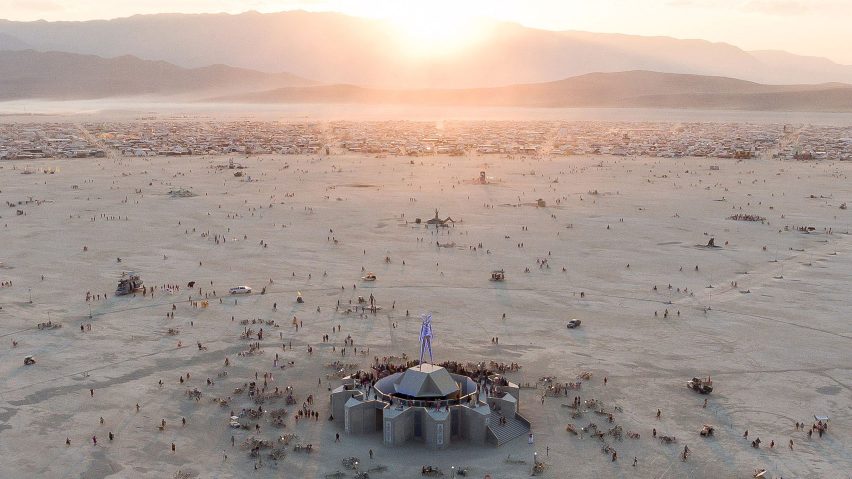Burning Man fans can watch the action from this year's festival unfold without getting dusty, thanks to a live online broadcast of the event.
Multiple cameras set up around the temporary Black Rock City and surrounding "playa" are providing 24-hour footage of the festival, which began 26 August and runs until 3 September 2018.
Set up by the organisers, the livestream allows anyone around the world to watch what goes on in the Nevada desert, where cell service and internet connections are usually limited.
This year's event – the first since its founder Larry Harvey died in April – is themed I,Robot, and asks participants to respond to the rise of technology and its impact on the world.
The temple, designed by a different architect or artist each year, is a spiralling wooden pavilion by Arthur Mamou-Mani of London-based Mamou-Mani Architects.
It will be burnt along with the festival's namesake "man" and many other timber structures to mark the end of the nine-day event.
Artworks and installations planned for the 2018 edition include a huge mirrored sphere by BIG's Bjarke Ingels and Jakob Lange, which appears to be being constructed despite not reaching its crowdfunding target.
Russian artist Alexander Shtanuk also launched a campaign to raise money to turn metallic emergency blankets into a vast billowing sheet at Burning Man, but it is yet unclear if he went through with the idea.
Images and details about the installations typically begin to emerge later into the festivities and after the event finishes, once revellers get a chance to share their experiences on social media.
Last year, Instagram users belatedly shared photos of the architectural and sculptural projects, while designers that attended – including Ingels and Yves Behar – also published memories after they returned home.
Burning Man was set up by Harvey on a San Francisco beach in 1986, and it has since grown to see 70,000 people descend on the desert each year. In a 2015 interview with Dezeen, Harvey explained how a festival of this magnitude requires extensive urban design in order to operate.
Main photograph is by Alex Medina.

